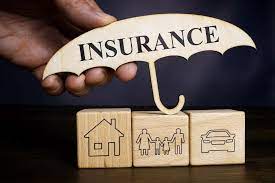Insurance is a critical safety net in today’s uncertain world. It helps protect you financially from unforeseen events such as accidents, illnesses, property damage, or loss of life. However, the cost of insurance can often be a burden, leading many to seek low-cost insurance options. But the big question remains:
Is low-cost insurance worth the risk?
In this article, we’ll dive deep into what low-cost insurance really means, the potential benefits and drawbacks, common pitfalls to watch out for, and how to decide if it’s the right choice for you.
Key Takeaways
- Low-cost insurance offers affordability but often with limited coverage and higher risks.
- Understand your needs and read policy details before committing to low-cost plans.
- Consider potential out-of-pocket costs and claim restrictions carefully.
- Use comparison tools, seek professional advice, and explore discounts to get the best value.
- Low-cost insurance may be suitable for low-risk individuals or temporary coverage, but comprehensive plans offer better protection.
- Regularly review and update your insurance policies to keep them aligned with your changing needs.
What is Low-Cost Insurance?
Low-cost insurance refers to insurance policies that offer coverage at a price significantly lower than standard or premium plans. This can apply to various types of insurance, including health, auto, home, life, and business insurance.
How can insurers offer low-cost insurance?
- Limited coverage or benefits
- Higher deductibles or co-pays
- Restricted provider networks
- Longer waiting periods or exclusions
- Basic or no add-ons and riders
The core appeal is affordability. Many people are attracted to low premiums because they fit better into tight budgets. But lower premiums often come with trade-offs.
Types of Low-Cost Insurance
Let’s briefly look at some common areas where low-cost insurance is prevalent:
Low-Cost Health Insurance
Plans with minimal benefits, higher deductibles, or limited networks often cost less but may leave you exposed to high out-of-pocket costs.
Low-Cost Auto Insurance
Basic liability-only policies are cheaper but do not cover damage to your own vehicle or injuries you sustain.
Low-Cost Homeowners or Renters Insurance
These may exclude certain perils or have low limits on coverage, meaning you might have to pay a significant amount if damage occurs.
Low-Cost Life Insurance
Term policies with low coverage amounts or no medical exam can be affordable but may not provide enough financial security.
Why People Choose Low-Cost Insurance
The reasons are straightforward:
- Budget Constraints: Insurance premiums can be expensive, and low-cost options help make coverage more accessible.
- Perceived Low Risk: Some assume they are healthy, careful drivers, or live in safe areas, so they don’t need full coverage.
- Lack of Awareness: Not everyone understands what their insurance covers, leading them to pick cheaper plans without knowing the gaps.
- Short-Term Needs: Sometimes people want just temporary protection or minimum compliance with legal requirements.
While these reasons are valid, the risks and potential costs of underinsurance can be significant.
Potential Risks of Low-Cost Insurance
Insufficient Coverage
Low-cost plans often have limited benefits, low payout limits, or exclude critical coverages, leaving you vulnerable.
Higher Out-of-Pocket Expenses
Plans with low premiums may come with high deductibles, co-pays, or hidden fees that add up when you file a claim.
Claim Denials or Complications
Some cheap policies have strict conditions or loopholes that increase the chance your claim will be denied or reduced.
Network Limitations
In health or auto insurance, limited provider networks can restrict your choices or force you to pay more for out-of-network services.
Reduced Customer Support and Service
Low-cost insurers might have less robust customer service, making it harder to resolve issues or get timely help.
How to Evaluate if Low-Cost Insurance Is Right for You
Before opting for low-cost insurance, consider these steps:
Assess Your Needs and Risks
Analyze your health, property, assets, lifestyle, and potential risks to determine how much coverage you really need.
Understand the Policy Details
Read the fine print carefully. What exactly is covered? What are the deductibles, co-pays, limits, and exclusions?
Compare Multiple Policies
Don’t just look at price—compare coverage, reputation, claim settlement ratio, and customer reviews.
Consider Your Financial Resilience
If you can absorb out-of-pocket expenses or risk partial coverage, low-cost insurance might make sense.
Think Long Term
Sometimes paying a little more for comprehensive coverage saves a lot in the long run by avoiding unexpected costs.
Pros of Low-Cost Insurance
- Affordable Premiums: Easier to fit into budgets, especially for young people, students, or those with limited income.
- Basic Legal Compliance: Helps meet mandatory insurance requirements (like auto liability insurance).
- Entry Point: Provides at least some coverage for those who might otherwise go uninsured.
- Flexibility: Can be a short-term solution while building finances for better coverage.
Cons of Low-Cost Insurance
- Coverage Gaps: Risk of significant financial loss if the coverage is inadequate.
- Higher Risk Exposure: You might have to pay more out of pocket in emergencies.
- Potential Claim Issues: Restrictions or exclusions can delay or deny claims.
- Limited Benefits: Fewer perks like wellness programs, roadside assistance, or comprehensive coverage.
Real-Life Examples of Low-Cost Insurance Pitfalls
- Health Insurance: Someone bought a cheap health plan with a low premium but faced a major illness. The policy excluded many treatments, leading to huge medical bills.
- Auto Insurance: A driver opted for minimum liability only, but after an accident, they had to pay thousands to repair their own car.
- Homeowners Insurance: A low-cost plan excluded flood damage, and after a flood, the homeowner was left with no coverage and a massive loss.
Tips to Get Affordable but Reliable Insurance

- Shop Around: Use comparison tools and brokers to find the best balance of price and coverage.
- Bundle Policies: Combining auto, home, and life insurance with one company can lower premiums.
- Maintain Good Credit and Driving Records: Many insurers offer discounts for good credit and safe driving.
- Increase Deductibles Carefully: A higher deductible lowers premiums but make sure you can afford it in case of claims.
- Ask About Discounts: Seniors, students, employees of certain companies, or members of associations may get discounts.
- Regularly Review Your Coverage: Needs change over time; update policies accordingly.
When to Avoid Low-Cost Insurance
- If you have dependents relying on your income (life insurance).
- If you own valuable property or assets (homeowners or renters insurance).
- If you have ongoing health issues requiring frequent medical care.
- If you drive frequently or have a history of accidents (auto insurance).
- When peace of mind and robust protection are your priorities.
How to Choose the Right Insurance Policy Without Overpaying?
Detailed Description:
This article would explore practical strategies for consumers to find insurance policies that balance cost and coverage. It would cover understanding different insurance terms, identifying personal needs, comparing policies, and spotting hidden fees. The guide would also emphasize the importance of reviewing policy documents and seeking professional advice to avoid paying too much for unnecessary coverage.
The Hidden Costs Behind Cheap Insurance: What You Need to Know
Detailed Description:
A deep dive into the often overlooked expenses associated with low-cost insurance plans. This could include high deductibles, co-pays, limited coverage exclusions, and the financial risks of claim denials. The article would explain how these hidden costs can end up being more expensive than a higher premium plan and provide tips on reading the fine print carefully.
Types of Insurance Everyone Should Consider in 2025
Detailed Description:
An expansive guide to the essential insurance types relevant today—health, auto, home, life, disability, and business insurance. The article would detail what each insurance covers, who needs it, average cost ranges, and how these protect against common risks. It would also discuss emerging insurance needs due to technological and social changes.
Why You Should Never Skip Insurance: Real Stories of Financial Disaster
Detailed Description:
This article would present compelling real-life stories and case studies where lack of insurance or inadequate coverage led to severe financial hardship. It would use these examples to educate readers on the importance of adequate insurance and how even minimal coverage can be life-saving.
Health Insurance Demystified: How to Get the Best Coverage for Less
Detailed Description:
A comprehensive breakdown of health insurance, including types of plans, terminology (deductibles, premiums, out-of-pocket maximums), and tips to get affordable coverage. The article would include advice on using government subsidies, employer plans, and marketplace options, plus how to avoid coverage gaps.
How Your Credit Score Impacts Insurance Premiums and How to Improve It
Detailed Description:
Explains the relationship between credit scores and insurance premiums in various insurance types like auto and home. It would provide actionable tips on improving credit scores and how a better score can reduce insurance costs, making it a vital read for financially savvy consumers.
The Pros and Cons of Bundling Insurance Policies
Detailed Description:
This article would analyze the benefits and potential downsides of buying multiple insurance policies (auto, home, life) from the same provider. It would cover cost savings, convenience, potential pitfalls like coverage overlap, and tips to negotiate the best deals.
How Technology Is Changing the Insurance Industry in 2025
Detailed Description:
Explores innovations like AI underwriting, telematics in auto insurance, digital claims processing, and personalized pricing models. It would discuss how these changes affect costs, customer experience, and the future landscape of insurance.
What to Look for in Business Insurance: Protecting Your Company Without Breaking the Bank

Detailed Description:
Targets entrepreneurs and small business owners with a detailed guide on different types of business insurance (liability, property, workers’ comp, professional liability). The article would advise on assessing risks, choosing the right coverage, and balancing premiums with protection.
Common Insurance Scams and How to Avoid Them
Detailed Description:
Raises awareness about prevalent insurance fraud schemes targeting consumers, such as fake policies, phishing scams, and fraudulent claims. It would provide tips on verifying insurers, reading contracts carefully, and reporting suspicious activity.
How to Maximize Your Insurance Benefits: Tips for Policyholders
Detailed Description:
Guidance on how policyholders can get the most from their insurance policies — understanding claim processes, documenting incidents properly, utilizing available discounts, and leveraging customer service resources.
The Environmental Impact of Insurance: How Climate Change Is Shaping Policy Costs
Detailed Description:
An insightful look into how rising natural disasters and climate risks are driving insurance premiums and shaping coverage options. It would discuss how insurers are adjusting policies, new coverage types like flood insurance, and what consumers can do to mitigate risks.
Travel Insurance in 2025: Is It Worth Buying for Every Trip?
Detailed Description:
Focuses on travel insurance benefits, types of coverage (trip cancellation, medical emergencies, lost luggage), and considerations for different travelers (business, leisure, adventure). The article would also analyze when it’s essential and when it might be an unnecessary expense.
Understanding Life Insurance: Term vs. Whole Life—Which Is Right for You?
Detailed Description:
Breaks down the differences between term and whole life insurance policies, including costs, benefits, and typical use cases. It would help readers choose based on financial goals, family needs, and budget.
How to File an Insurance Claim Successfully: Step-by-Step Guide
Detailed Description:
Provides detailed instructions on filing claims for health, auto, home, or life insurance. It would include tips on gathering documentation, communicating with insurers, timelines, and handling claim disputes.
The True Cost of Being Underinsured: Why Cutting Corners Can Backfire
Detailed Description:
Explores the dangers and financial consequences of underinsurance. This article would cover scenarios where people chose minimal coverage to save money but faced devastating expenses during emergencies. It would stress the importance of adequately assessing insurance needs and periodically updating policies.
How Inflation Affects Your Insurance Premiums and Claims
Detailed Description:
Analyzes the impact of rising inflation on insurance costs and claim payouts. The article would explain why premiums increase, how claim amounts may not keep up with inflation, and what consumers can do to protect their coverage value over time.
Pet Insurance: Is It Worth the Cost for Your Furry Friend?
Detailed Description:
Breaks down the benefits and limitations of pet insurance, types of coverage available, typical costs, and common exclusions. It would help pet owners decide if insurance makes sense based on their pet’s health, breed risks, and financial situation.
How to Use Insurance as a Financial Planning Tool
Detailed Description:
This article would explain how various types of insurance (life, disability, long-term care) can fit into broader financial and retirement plans. It would discuss benefits like income replacement, tax advantages, and legacy planning.
The Rise of Usage-Based Insurance: Pay-As-You-Go Models Explained
Detailed Description:
Explores new insurance pricing models based on actual usage, such as pay-per-mile auto insurance or health insurance based on activity trackers. The article would discuss pros, cons, and potential savings for consumers.
Insurance for Gig Workers and Freelancers: What You Need to Know
Detailed Description:
Addresses the unique insurance challenges and needs of independent contractors and gig economy workers. The article would cover health insurance options, liability, income protection, and retirement plans tailored for non-traditional employment.
Understanding Insurance Riders and Add-Ons: Are They Worth It?
Detailed Description:
Explains what riders and add-ons are in insurance policies, common types, and how they modify basic coverage. The article would help readers decide which add-ons provide valuable protection versus those that may be unnecessary.
The Role of Insurance in Disaster Preparedness and Recovery\

Detailed Description:
Discusses how insurance can be a critical part of personal and community disaster planning. It would highlight coverage types for natural disasters, common gaps, and steps to ensure fast claims and recovery.
How Life Changes Affect Your Insurance Needs
Detailed Description:
Covers major life events such as marriage, having children, buying a home, or retirement, and how they impact the types and amounts of insurance coverage needed. It would provide a checklist for reviewing policies after life transitions.
The Ethics of Insurance: Balancing Profit and Protection
Detailed Description:
An insightful piece exploring the ethical considerations in the insurance industry—pricing fairness, claim handling, discrimination concerns, and regulatory oversight. It would include consumer rights and how to advocate for fair treatment.
How to Spot a Reliable Insurance Agent or Broker
Detailed Description:
Offers guidance on selecting trustworthy insurance professionals. The article would list red flags, questions to ask, and tips on verifying credentials and experience.
The Future of Insurance: Trends to Watch in the Next Decade
Detailed Description:
Forecasts emerging trends such as AI integration, climate risk adaptations, blockchain in claims processing, and personalized insurance products. The article would help consumers prepare for evolving insurance landscapes.
How to Avoid Common Mistakes When Buying Insurance
Detailed Description:
A practical guide outlining frequent errors like underestimating coverage needs, ignoring policy exclusions, or failing to disclose important information. It would teach readers how to make informed decisions.
Why Your Location Matters: How Geography Impacts Insurance Costs and Coverage
Detailed Description:
Explains why insurance premiums vary by location due to factors like crime rates, weather risks, and local regulations. The article would advise how to shop smartly if you’re relocating or buying property.
The Impact of Lifestyle Choices on Insurance Premiums
Detailed Description:
Examines how habits such as smoking, drinking, driving behavior, and fitness levels influence insurance rates, especially health and life insurance. The article would suggest ways to improve premiums through healthier choices.
Navigating Health Insurance Options for Seniors: What You Need to Know
Detailed Description:
As people age, their health insurance needs change significantly. This article would focus on the unique challenges seniors face when choosing health insurance, including Medicare, Medigap policies, and supplemental insurance. It would explain how to evaluate plan benefits, understand coverage gaps, and avoid common pitfalls that could lead to costly medical bills. It will also discuss strategies to manage premiums and out-of-pocket costs while maintaining access to quality healthcare providers.
The Essentials of Disability Insurance: Protecting Your Income When You Can’t Work
Detailed Description:
Disability insurance is often overlooked but plays a crucial role in financial security. This article would delve into the different types of disability insurance (short-term vs. long-term), how to qualify, and what benefits they provide. It would also discuss common exclusions, how to assess your risk of disability, and tips on choosing the right coverage based on your occupation and lifestyle. The article aims to highlight the importance of protecting your income and maintaining financial stability during unexpected health challenges.
How to Protect Your Home with the Right Insurance in Disaster-Prone Areas
Detailed Description:
Homeowners living in regions prone to natural disasters face complex insurance decisions. This article would explore essential coverage types like flood, earthquake, and hurricane insurance, often excluded from standard policies. It would guide homeowners through assessing their risk, understanding specialized policies, and securing adequate protection without overspending. Additionally, it would cover how to prepare documentation for claims and navigate insurer requirements after a disaster strikes.
The Growing Importance of Cyber Insurance in the Digital Age
Detailed Description:
With cyber threats rising, businesses and individuals increasingly need protection against data breaches, ransomware, and online fraud. This article would explain what cyber insurance covers, who needs it, and how policies are structured. It would also explore real-world examples of cyber incidents, costs involved, and best practices to reduce risk. The article would help readers understand this emerging field and evaluate whether cyber insurance fits their security plan.
Life Insurance for Young Adults: Why Starting Early Pays Off
Detailed Description:
Young adults often overlook life insurance, thinking it’s unnecessary until later in life. This article would explain the benefits of purchasing life insurance early, such as lower premiums and guaranteed insurability. It would discuss types of policies suitable for young adults, how life changes impact coverage needs, and how life insurance can be a part of long-term financial planning. The goal is to encourage younger readers to consider life insurance as a foundational financial tool.
Understanding Renters Insurance: Affordable Protection for Your Belongings
Detailed Description:
Renters insurance is an affordable way to protect personal belongings and cover liability risks, but many renters remain uninsured. This article would explain what renters insurance covers, why it’s important, and how to choose the right policy. It would also cover common misconceptions, such as landlords’ insurance not covering tenants’ possessions, and provide practical tips on saving money through discounts and bundling.
The Impact of Climate Change on Insurance Markets: Challenges and Adaptations
Detailed Description:
Climate change is reshaping insurance markets worldwide, affecting premiums, coverage availability, and risk assessment. This article would analyze how increased frequency and severity of natural disasters influence underwriting practices and insurance costs. It would discuss innovations in risk modeling, government interventions, and how consumers can adapt by improving home resilience and purchasing specialized coverage.
Travel Insurance Essentials: What Every International Traveler Should Know
Detailed Description:
International travel comes with unique risks, making travel insurance an important consideration. This article would detail different types of travel insurance coverage—medical emergencies, trip cancellations, lost luggage—and how to evaluate policy limits and exclusions. It would also offer advice on purchasing insurance based on trip length, destination risks, and traveler health conditions to ensure comprehensive protection abroad.
How to Spot and Avoid Insurance Fraud: Protecting Yourself and Your Wallet
Detailed Description:
Insurance fraud can lead to higher premiums for everyone and jeopardize legitimate claims. This article would explain common types of fraud—fake policies, inflated claims, identity theft—and how consumers can detect red flags. It would provide actionable tips on verifying insurers, safeguarding personal information, and reporting suspicious activity to protect oneself and the insurance system.
The Role of Insurance in Estate Planning: Securing Your Legacy
Detailed Description:
Estate planning isn’t just about wills and trusts; insurance plays a vital role too. This article would explore how life insurance can provide liquidity for estate taxes, support beneficiaries, and fund trusts. It would also discuss how different policy types fit into estate planning strategies and the importance of regularly reviewing insurance as part of an overall Financial plan.
Also read : Is One Type of Insurance Enough to Keep You Protected?
Conclusion
Low-cost insurance can be a tempting option for many due to its affordability. It provides a basic safety net and helps meet legal or minimal financial protection requirements. However, it often comes with trade-offs such as limited coverage, higher out-of-pocket costs, and potential claim challenges.
Determining whether low-cost insurance is worth the risk depends largely on your individual circumstances, risk tolerance, financial resilience, and understanding of the policy terms. The best approach is to thoroughly research, compare options, and balance cost against adequate protection.
Remember, insurance is not just about price—it’s about security and peace of mind when life throws curveballs. Sometimes, spending a little more upfront can save you from devastating financial consequences later.
FAQs
Does low-cost insurance mean poor quality?
Not necessarily. Some low-cost policies offer adequate coverage for specific needs. The key is to understand what you’re buying and ensure it matches your risk tolerance.
Can low-cost insurance save money in the long run?
It depends. If you never file a claim, low-cost insurance saves premiums. But if a claim arises, inadequate coverage could lead to higher expenses.
Are low-cost insurance plans more likely to deny claims?
Some low-cost plans have stricter terms, which can increase claim denials. Always read policy conditions carefully.
How can I find reliable low-cost insurance?
Compare multiple providers, read customer reviews, check claim settlement ratios, and consult independent rating agencies.
Is it better to pay more for comprehensive insurance?
If your financial situation allows, comprehensive insurance usually provides better peace of mind and protection.
Are there government-subsidized low-cost insurance options?
Yes, many countries offer subsidized health or auto insurance for low-income individuals, which can be both affordable and reliable.
How often should I review my insurance coverage?
At least once a year or after major life events such as marriage, buying a home, or changes in income or health.


